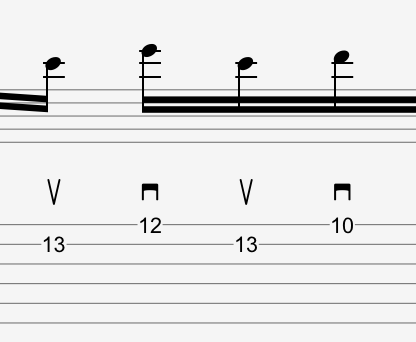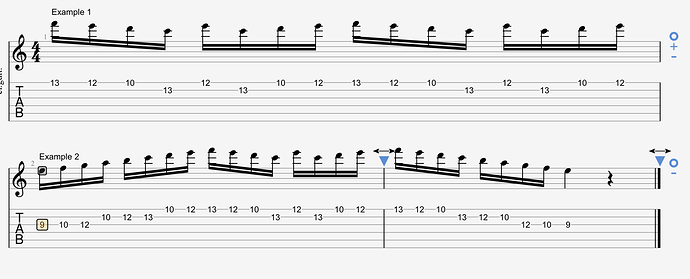Hey @Troy @Brendan and everyone else 
Ok so this is something that i have struggled with for EVER!
This is all alternate picked. the bit that kills me is the last 16th note of beat 1 and the following 3 16th notes.
Ive tried everything and it never feels like i have ever conqured the move?
Some days it feels ok, other days its like somebody swapped my hands and i can’t get it clean at all.
I recently watched the wrist motion section of the pick slanting primer. It helped a bit but still didn’t fix this problem.
I’m unsure if this move is more of a cross picking move and/or if i should i be rotating the forearm slightly at this point in time?
Its these 4 notes here

if you stay downward pick slanting and plant the outer side of the palm heel on the bridge then the pick gets jammed so you have to string hop.
If i stay upward pickslaning and plant the thumb heel side of the palm against the bridge i often miss the notes on the high E string (not every time but often)
If i rotate my arm slightly to allow myself to switch between outer palm and thumb heel alternatively for each of these notes i can sometimes get it clean. However i then notice that once i start this rocking/key turning in the door motion i end up doing it on every note from then on 
I’ve tried to use a curved picking pattern for these 4 notes (ala cross picking) but it seems very laboured.
Ive honestly been struggling with this double inside string shift since time began.
Any advice would be great





